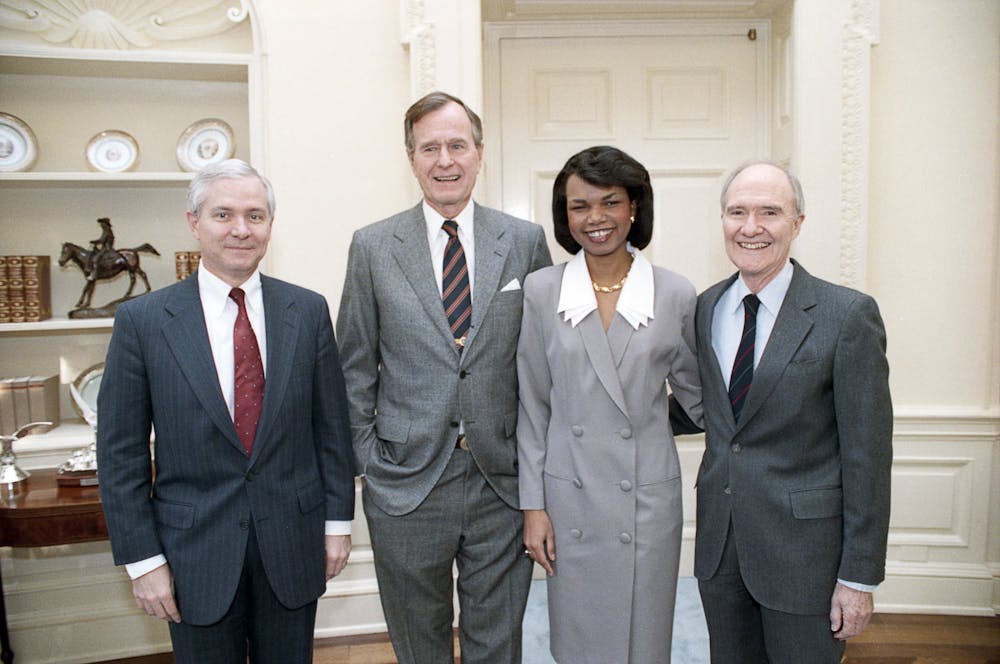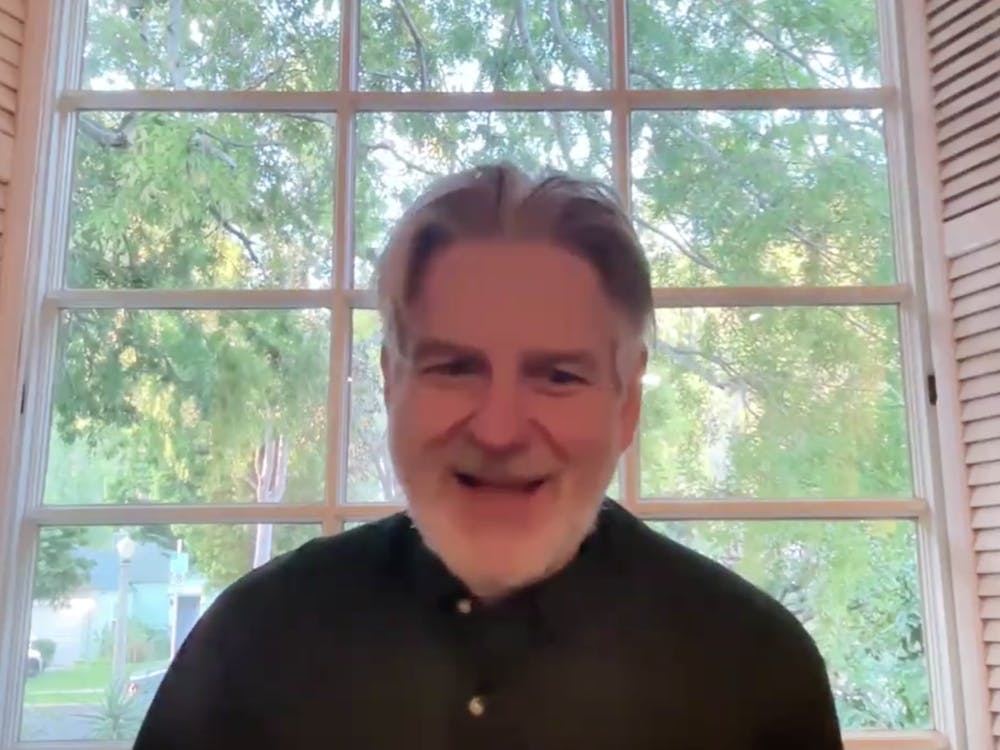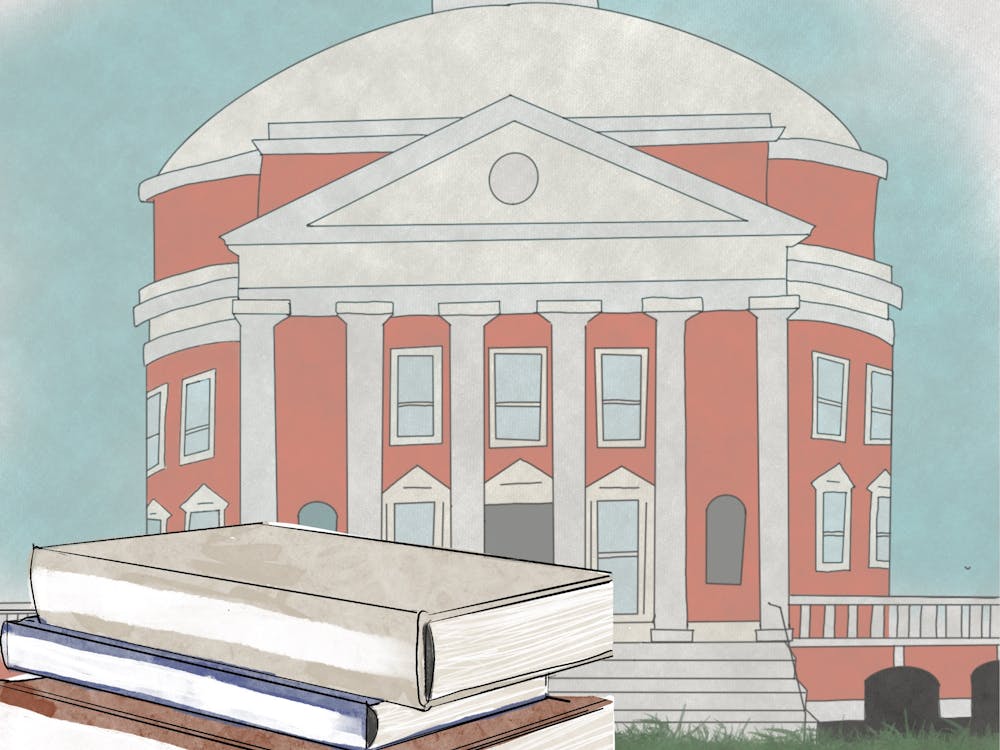Even though the Virginia Film Festival shifted to a primarily virtual format this year, the quality of the films was not affected. One of the films included in the online festival was “The Art of Statecraft: The Bush 41 Team.” The documentary focuses on international policy during the presidency of George H.W. Bush, mostly focused on the years 1989 to 1993 but with flashbacks to preceding events. The film pairs this footage with interviews from scholars and members of the administration from today to reflect upon the decisions of the Bush administration.
Members of the Bush administration make appearances in the documentary. Vice President Dan Quayle, Chief of Staff John H. Sununu, Secretary of State James Baker, Deputy National Security Advisor Robert Gates, Secretary of Defense Dick Cheney, Colin Powell and William Webster, the former Director of Central Intelligence are all featured.
The film is an in-depth — if not even-handed — look at the Bush presidency. The first Bush is often looked over, possibly because he was a one-term president and his son’s presidency was much more memorable than his — particularly for younger Americans. So it’s valuable to get an in-depth look at his presidency, especially given the historical significance of the time period — this is the presidency when the end of the Cold War, the fall of the Soviet Union, Operation Desert Storm and the protest of Tiananmen Square all occurred. To see the perspective of American leaders during this tumultuous time period is very much appreciated.
The film only focuses on the international issues of the Bush presidency, which was a critical decision by the filmmakers. The documentary clocks in at only 56 minutes, so to go in-depth into the domestic and international politics of a four-year period in that brief runtime would have been impossible. The filmmakers would have had to leave out certain interviews or footage just in order to mention everything of significance, and the quality and flow of the movie would have been sacrificed.
As we come upon a presidential election and the two-year anniversary of Bush’s death, the documentary does a wonderful job of letting the audience see what he was like as a person and his views on the role of the presidency. This perspective is important now when we have a president who many argue has neglected the important responsibilities of the highest office in the world. In the film, we see a viewpoint of Bush that Americans don’t usually see — a funny, compassionate man, who from his perspective tried to do what was best for the country.
Another standout element of the film is the implementation of archival footage, interviews and photographs. The extensive collection helps the audience learn and understand what occurred during the Bush presidency through visuals and first-person accounts. One of the best examples is an interview with Robert Blackwell, a former member of the National Security Council, who tells a nail-biting story about the Malta Summit — the first official meeting between Bush and Soviet President Mikhail Gorbachev.
According to Blackwell’s recollection, Bush and Gorbachev decided to meet on a Soviet ship, in order for Gorbachev to feel comfortable. Members of the Bush administration had to travel from the shore to the Soviet ship on a small boat. Important members of the Bush administration were on a small boat in rough waters. Footage of this story is also shown to accompany Blackwell’s account.
The story invokes a central idea of the documentary — that President Bush was unwavering in his actions. He was very deterministic. When he wanted something to happen, he would do anything within his means to make it happen. Only those closest to him would truly know this.
The biggest criticism of the film has to be its rosy perspective of the administration and its lack of critique of their actions, especially when the documentary discusses Operation Desert Storm. The documentary does acknowledge that the Bush administration could have gone all-in and captured or killed Saddam Hussein, but chose not to. However, the filmmakers did not really push any of the participants being interviewed on why they didn’t get Hussein, or why they chose to enter Kuwait with military force then retreat with no further military action. One popular viewpoint on the invasion of Iraq in 1991 now is that it was a hasty decision that has contributed to the modern unrest in the Middle East. The fact that this was not heavily addressed is a massive critique of the documentary.
All presidents have made mistakes or are seen in a more negative light now than at the time. It is important to acknowledge these flaws because it makes our democracy stronger — the fact that the documentary doesn’t question Bush’s decisions is unfortunate and decreases the quality of the film.
The film brings a lot of interesting perspectives and information to its audience. Although not for everyone, “The Art of Statecraft” will definitely interest politics and American history junkies. But if you’re looking for an objective documentary, give it a pass.





